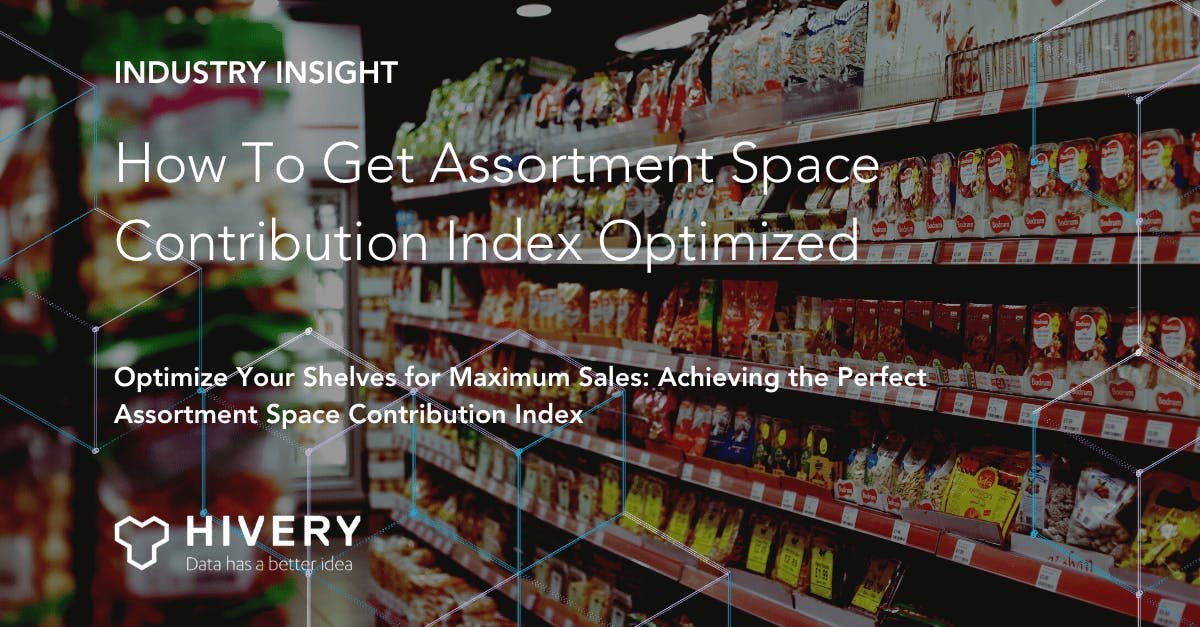
How To Get Assortment Space Contribution Index Optimized
Optimize Your Shelves for Maximum Sales: Achieving the Perfect Assortment Space Contribution Index
The Space Contribution Index is a key metric in the field of assortment planning and optimization. It measures the proportion of linear shelf space a product occupies relative to its sales performance. Getting this fine-tuned for each category at each store is a tough task. It also takes some effort to achieve the accuracy and speed necessary to respond to shopper trends and retailer requirements.
This index is calculated as a blended contribution rate, with an ideal index value of 100%, indicating a balanced relationship between shelf space and sales.
The Space Contribution Index provides valuable insights into how well a retailer's product assortment is optimized for its target market, as it helps to identify opportunities to maximize sales and profit.
However, calculating the Space Contribution Index (SCI) can be a complex process, especially considering the vast amount of store-level data that needs to be analyzed. The difficulty is amplified when category management, space teams, and retailer buyers must conduct the exercise at different retailers with different cluster store counts and consider the impact of product innovation. Simply put, getting the index optimal is nearly impossible with current methods, systems, and tools.
This is where AI and advanced data analytics techniques come into play, as they can help to automate and rapidly enable retail and consumer package goods (CPG) teams.
Streamlining the calculation of the SCI is possible by leveraging AI algorithms with store-level data; retailers can get a much more granular and accurate picture of their product assortment optimization. This leads to better decision-making and more effective shelf space allocation, regardless of the number of store clusters analyzed.
For example, lets consider a typical Dollar Store retailer with say over 18,000 stores. They may have 8 to 4 clusters to ensure operational efficiencies but it also means some stores will receive the same assortment and space allocation. Our model can analyzing these clusters and determine suboptimal indexing. Such outcomes can and will lead to out of stocks or overstocking. The ability to understand this with the speed needed is the key point. This information can then be used to develop targeted recommendations for reallocating space based on specific parameters such as minimum sales thresholds or store door count. It can also effectively redesign your retail store cluster count and planograms. Suppose the CPG supplier is trying to win the "category captaincy" or just positioning themselves as an innovative supplier. In that case, such category insights can be a game-changer for the retailer-supplier relationship.
To summarise, the Space Contribution Index is a critical tool for retailers looking to optimize their product assortment and maximize sales. However, calculating this index can be challenging, time-consuming, and at times just difficult to do and do well, especially with large amounts of store-level data to analyze. By leveraging AI and advanced data analytics techniques, retailers and suppliers can achieve a far more rapid analysis that is much more accurate and, more importantly: an actionable view of their product planogram at the store level, regardless of the number of store clusters being analyzed.
If you like to learn about HIVERY's AI offering, HIVERY Curate, and see if it can optimize your Space Contribution Index, request a demo.
Related resources you might be interested in:
Blog: Do Current Assortment Optimization Methods Create Store Sacrifices?
Blog: Demand Sensing: The New Era of Retail Demand Planning